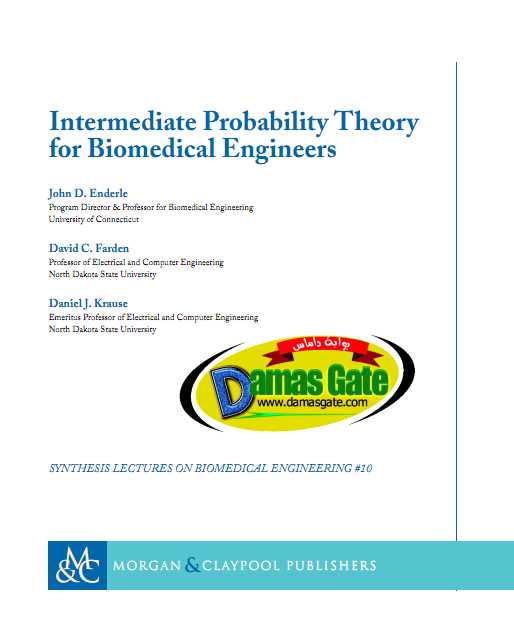Intermediate Probability Theory for Biomedical Engineers - JohnD. Enderle

ABSTRACT
This is the second in a series of three short books on probability theory and random processes for
biomedical engineers. This volume focuses on expectation, standard deviation, moments, and the
characteristic function. In addition, conditional expectation, conditional moments and the conditional
characteristic function are also discussed. Jointly distributed random variables are described, along
with joint expectation, joint moments, and the joint characteristic function. Convolution is also
developed. A considerable effort has been made to develop the theory in a logical manner—
developing special mathematical skills as needed. The mathematical background required of the
reader is basic knowledge of differential calculus. Every effort has been made to be consistent
with commonly used notation and terminology—both within the engineering community as
well as the probability and statistics literature. The aim is to prepare students for the application
of this theory to a wide variety of problems, as well give practicing engineers and researchers a
tool to pursue these topics at a more advanced level. Pertinent biomedical engineering examples
are used throughout the text.
KEYWORDS
Probability Theory, Random Processes, Engineering Statistics, Probability and Statistics for
Biomedical Engineers, Statistics. Biostatistics, Expectation, Standard Deviation, Moments,
Characteristic Function
Download
*

ABSTRACT
This is the second in a series of three short books on probability theory and random processes for
biomedical engineers. This volume focuses on expectation, standard deviation, moments, and the
characteristic function. In addition, conditional expectation, conditional moments and the conditional
characteristic function are also discussed. Jointly distributed random variables are described, along
with joint expectation, joint moments, and the joint characteristic function. Convolution is also
developed. A considerable effort has been made to develop the theory in a logical manner—
developing special mathematical skills as needed. The mathematical background required of the
reader is basic knowledge of differential calculus. Every effort has been made to be consistent
with commonly used notation and terminology—both within the engineering community as
well as the probability and statistics literature. The aim is to prepare students for the application
of this theory to a wide variety of problems, as well give practicing engineers and researchers a
tool to pursue these topics at a more advanced level. Pertinent biomedical engineering examples
are used throughout the text.
KEYWORDS
Probability Theory, Random Processes, Engineering Statistics, Probability and Statistics for
Biomedical Engineers, Statistics. Biostatistics, Expectation, Standard Deviation, Moments,
Characteristic Function
Download
*